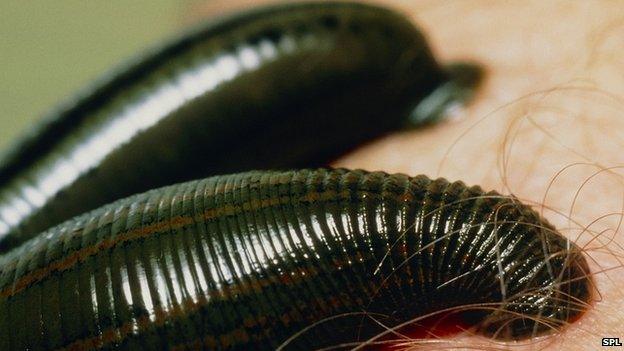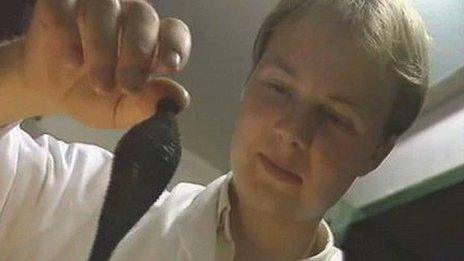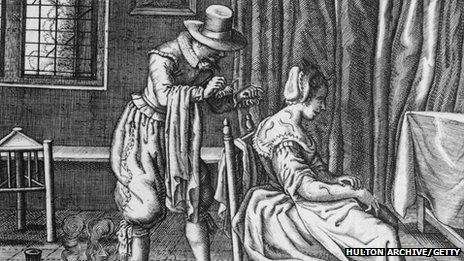Medicinal leech farming making a comeback in Wales
- Published

In the Victorian era Britain used over 42 million leeches a year for medical blood-letting
Two hundred years ago Wales laid claim to being the leech-farming capital of Europe and once again it is back on the map.
In the Victorian era Britain used over 42 million leeches a year for medical blood-letting.
It was an industry worth around £1m per annum, even at 19th Century prices, and a quarter of that profit was made in Wales.
The practice died out early last century, as the leech was hunted almost to extinction and the benefits of blood-letting were called into question.
But now leech-farming is back in Wales.
It may be a far cry from 42 million, but the 60,000 leeches a year they provide for hospitals throughout Europe make Swansea's Biopharm the biggest suppliers of leeches in the UK.
Carl Peters-Bond is in charge of raising all the company's leeches - from cocoon to casualty.
"The main reason the practice died out was because, after 4,000 years, people finally cottoned on to the fact that blood-letting simply didn't work," he said.
'Tiny teeth'
"For millennia physicians had believed in the four humours: blood, phlegm and black and green bile. The theory was that by draining some of the blood you'd somehow be able to restore the body's balance and cure virtually any illness."
And believe it or not, if you had your blood let by a leech, then you were one of the lucky ones.
Because those who could not afford the services of a leech farmer had their blood let by slitting a vein.
However, in 2013 the use of leeches is much more specialised, not to mention effective.

All the leeches are bred in labs these days
"For most of the last century leeches became associated with quack medicine, which is really unfair, as they're fascinating little things," said Mr Peters-Bond.
"They have over 300 tiny teeth in three sets of jaws which latch on to their host. To keep the blood flowing they introduce a quite powerful anticoagulant chemical."
That makes them perfect for microsurgery, particularly when severed fingers or toes have been reattached.
"Because whilst blood can flow into the injured area through large arteries, often the smaller veins which should be taking it away again are damaged and the blood will collect and eventually the tissue will die.
"So while the veins are repairing themselves surgeons can pop on a leech, which will drain up to 50mls before dropping off, and afterwards the blood will keep flowing through the wound for around another 10 hours."
'Trouser legs'
Wales first became a leech-farming hotspot owing to geography.
In common with Somerset and Cumbria, the mud-flats of Pembrokeshire and Gwent provide an ideal habitat.
Traditionally they were harvested by women, who would lift their skirts and wade into muddy pools allowing the leeches to attach themselves to their bare legs for long enough to take them to an apothecary or specialist leech dealer.
But whilst the women themselves would be lucky to earn a penny per leech, doctors would often charge six times as much for their use on patients.

A doctor applies leeches to the back of a female patient as a means of letting blood in the 17th Century
"Leeches were really quite a high-status medical commodity," Mr Peters-Bond said.
"Owning your own was seen as something aspirational, as those who couldn't afford them would have to rent them from their local doctor or pharmacist.
"Luckily for me all our leeches are bred in labs these days, so I never have to roll-up my trouser legs and get into the mud.
"And whilst they were traditionally transported around the country on the body of old horses, thanks to modern refrigeration, all our leeches can travel by lorry.
"Because a leech chilled to 4C may only require one feed every five years."